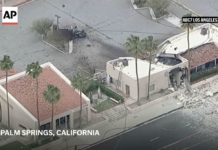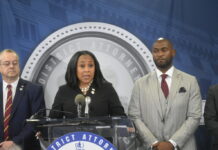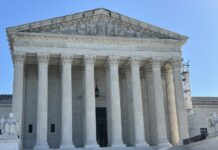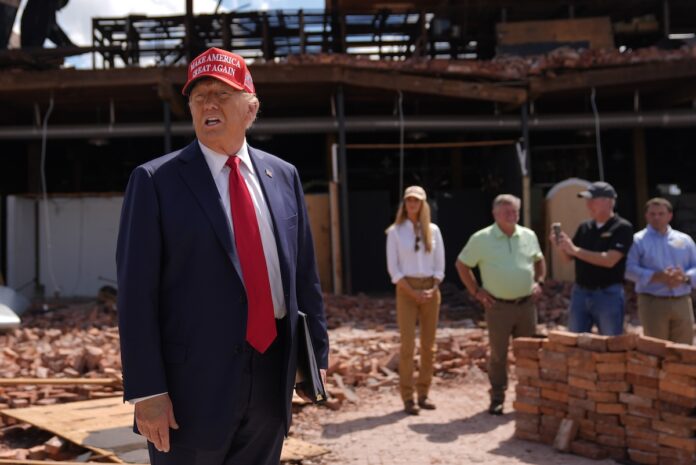
VALDOSTA, Ga. (AP) — Donald Trump repeatedly spread falsehoods Monday about the federal response to Hurricane Helene despite claiming not to be politicizing the disaster as he toured hard-hit areas in south Georgia.
The former president and Republican nominee claimed upon landing in Valdosta that President Joe Biden was “sleeping” and not responding to Georgia Gov. Brian Kemp, who he said was “calling the president and hasn’t been able to get him.” He repeated the claim at an event with reporters after being told Kemp and Biden had both said they had spoken.
The White House previously announced that Biden spoke by phone on Sunday night with Kemp and North Carolina Gov. Roy Cooper, as well as Scott Matheson, mayor of Valdosta, Georgia, and Florida Emergency Management Director John Louk. And Kemp confirmed Monday morning that he spoke to Biden the night before.
“The president just called me yesterday afternoon and I missed him and called him right back and he just said ‘Hey, what do you need?’ And I told him, you know, we’ve got what we need, we’ll work through the federal process,” Kemp said. “He offered if there are other things we need just to call him directly, which I appreciate that.”
In addition to being humanitarian crises, natural disasters can create political tests for elected officials, particularly in the closing weeks of a presidential campaign in which among the hardest-hit states were North Carolina and Georgia, two battlegrounds. Trump over the last several days has used the damage wrought by Helene to attack Vice President Kamala Harris, the Democratic nominee, and suggest she and Biden are playing politics with the storm — something he was accused of doing when president.
While the White House highlighted Biden’s call to Kemp and others, the president faced questions about his decision to spend the weekend at his beach house in Delaware, rather than the White House, to monitor the storm.
“I was commanding it,” Biden told reporters after delivering remarks at the White House on the federal government’s response. “I was on the phone for at least two hours yesterday and the day before as well. I commanded it. It’s called a telephone.”
Biden received frequent updates on the storm, the White House said, as did Harris aboard Air Force Two as she made a West Coast campaign swing. The vice president cut short her campaign trip Monday to return to Washington for a briefing from the Federal Emergency Management Agency.
Trump, writing on his social media platform Monday, also claimed without evidence that the federal government and North Carolina’s Democratic governor were “going out of their way to not help people in Republican areas.” Asheville, which was devastated by the storm, is solidly Democratic, as is much of Buncombe County, which surrounds it.
The death toll from Helene has surpassed 100 people, with some of the worst damage caused by inland flooding in North Carolina.
At the beginning of a rally in Las Vegas on Sunday, Harris said “we will stand with these communities for as long as it takes to make sure that they are able to recover and rebuild.”
Trump, speaking in Erie, Pa., on Sunday, described the storm as “a big monster hurricane” that had “hit a lot harder than anyone even thought possible.”
Trump said he wanted to stop in North Carolina but is holding off because access and communication is limited in hard-hit communities.
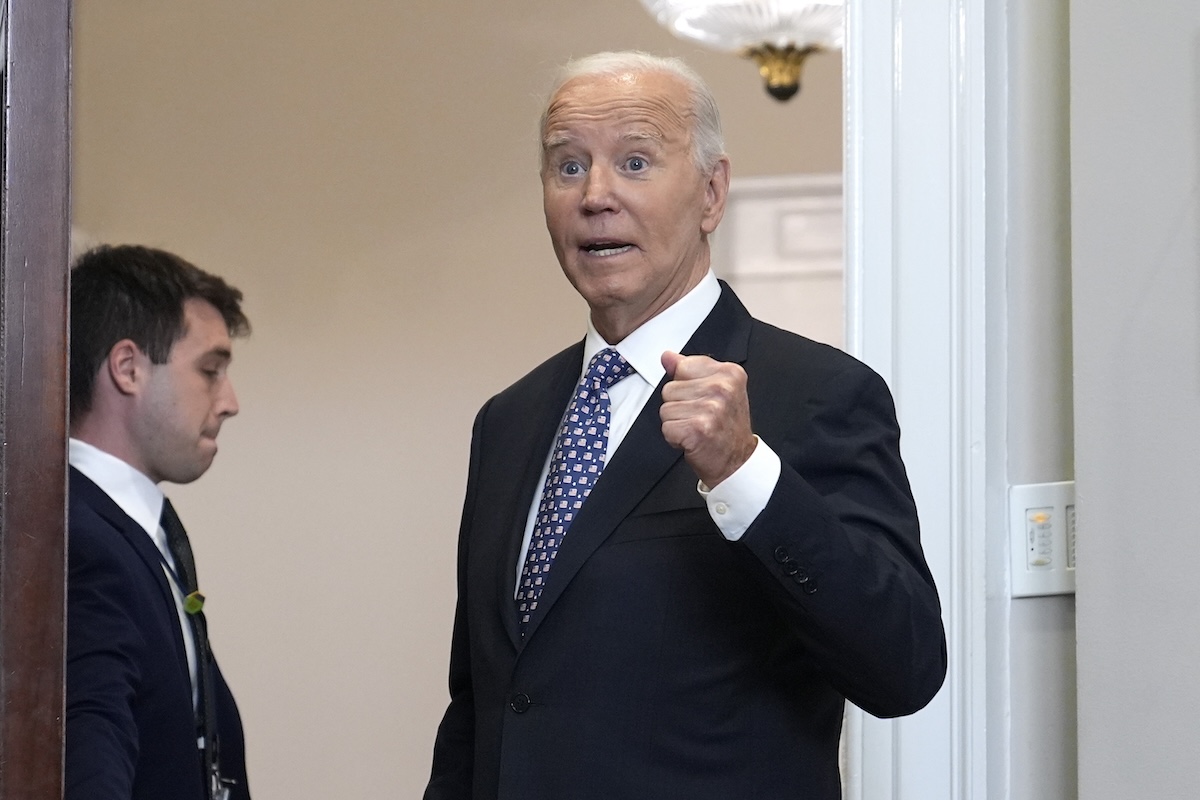
When asked by the Associated Press on Monday if he was concerned that his visit to Georgia was taking away law enforcement resources that could be used for disaster response, Trump said, “No.” He said his campaign instead “brought many wagons of resources.”
The Trump campaign partnered with the Christian humanitarian aid organization Samaritan’s Purse to bring trucks of fuel, food, water and other critical supplies to Georgia, said Karoline Leavitt, the Trump campaign’s national press secretary.
During Trump’s term as president, he visited numerous disaster zones, including the aftermaths of hurricanes, tornadoes and shootings. But the trips sometimes elicited controversy such as when he tossed paper towels to cheering residents in Puerto Rico in 2017 in the wake of Hurricane Maria.
It also took until weeks before the presidential election in 2020 for Trump’s administration to release $13 billion in assistance for the territory. A federal government watchdog found that officials hampered an investigation into delays in aid delivery.
In another 2019 incident, Trump administration officials admonished some meteorologists for tweeting that Alabama was not threatened by Hurricane Dorian, contradicting the then-president. Trump would famously display a map altered with a black Sharpie pen to indicate Alabama could be in the path of the storm.
Trump campaign officials have long pointed to his visit to East Palestine, Ohio, the site of a toxic trail derailment, as a turning point in the early days of the presidential race when he was struggling to establish his footing as a candidate. They believed his warm welcome by residents frustrated by the federal government’s response helped remind voters why they had been drawn to him years earlier.
The White House said Harris would visit impacted areas “as soon as it is possible without disrupting emergency response operations.” She also spoke with Gov. Roy Cooper of North Carolina, and she received a briefing from FEMA Administrator Deanne Criswell while she was traveling.
FEMA uses the disaster relief fund to coordinate the federal response to major disasters. It pays for debris removal, the repair of public infrastructure and financial assistance for survivors, among other things. The temporary spending bill passed and signed into law last week pumped about $20 billion into the fund and gave FEMA the ability to spend that money more quickly.
That should help the agency respond to the most immediate needs, but lawmakers from both parties recognize that additional money will be needed in the coming months. Lawmakers are expected to return to Washington shortly after the November election and negotiate a full-year spending bill, when many lawmakers will seek billions of dollars more for the disaster relief fund.
Biden described Hurricane Helene as “a historic, history-making storm” during remarks at the White House on Monday. He plans to visit areas affected by the storm later this week, with efforts to not disrupt response efforts.
“I want them to know, we’re not leaving until the job is done,” he said.



